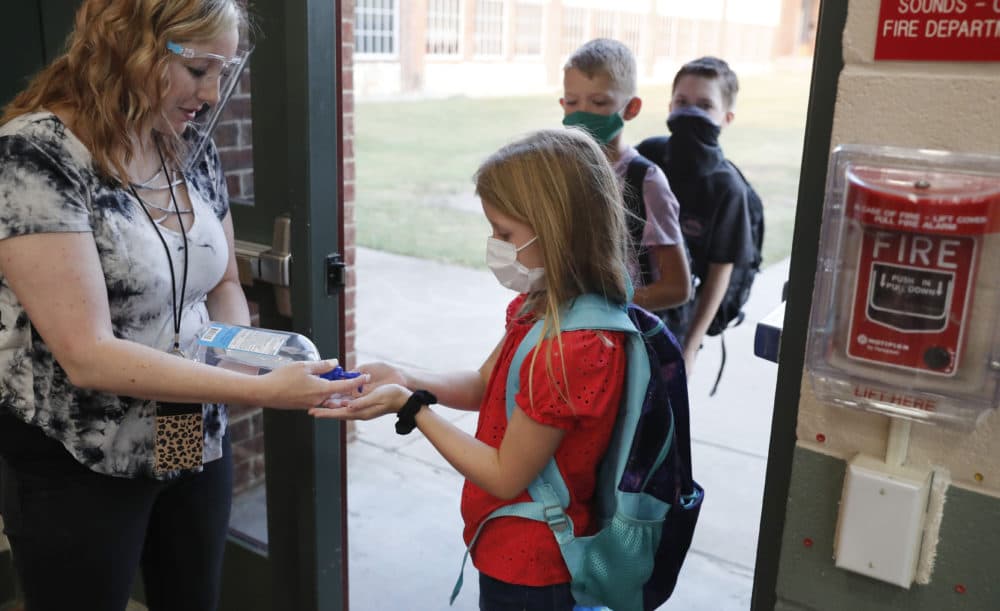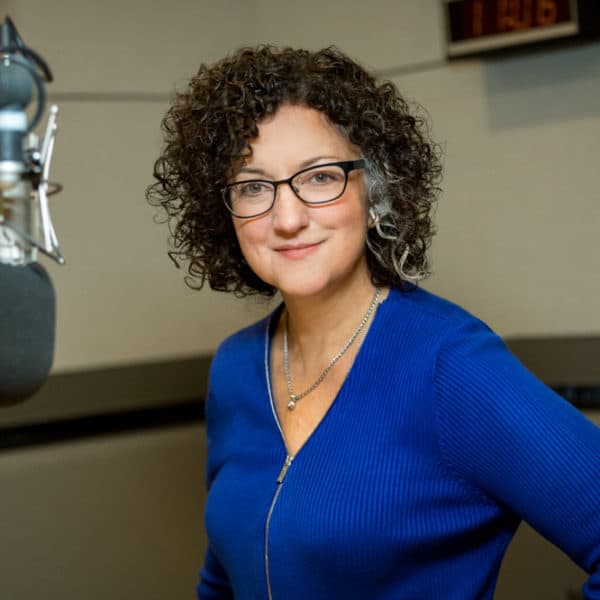Advertisement
Coronavirus Coverage
MGH Study: Kids Have Higher Levels Of Coronavirus In Airways Than Adults

Many schools in Massachusetts are getting set to reopen next month. Educators and parents are on edge about the big unknown: how much the coronavirus will spread in schools.
Since the beginning of the pandemic, it's been said that the virus doesn't affect children nearly as much as adults — that kids, for the most part, don't get as sick and don't transmit the virus as easily.
But a new study from Massachusetts General Hospital has found that children carry a lot of the virus in their system — even when they appear healthy. The study did not look at how much the youth transmitted the virus, but lead author of the study Dr. Lael Yonker says the viral load generally corresponds with how infectious someone is.
The study enrolled 192 pediatric patients from less than one year old up to 22. Study subjects were coming to the health care facilities for evaluation of possible COVID-19 symptoms or because of exposure to a person with the coronavirus. Forty-nine tested positive; another 18 were diagnosed with multisystem inflammatory syndrome in children (MIS-C), which is associated with the coronavirus.
WBUR's All Things Considered host Lisa Mullins spoke with Dr. Yonker, a pediatric pulmonologist at MGH.
Interview Highlights
You said you were surprised by what you and your colleagues found in terms of how much coronavirus these kids had in their airways. What surprised you?
"We were very surprised by this. We quantified the amount of virus and then compared it with adults who were hospitalized in the ICU. And we found that the kids had significantly higher levels of virus than these adults in the ICU. And when you think of the ICU in the hospitals, especially during the peak of the pandemic, you have people wearing full body coverings, masks, face shields, all of these protections in place — whereas these children are walking around with significantly higher viral loads [without such precautions being taken]. And so that was very surprising and alarming to us.
"I think the fact that the viral load is so high in that early stage of illness — sometimes before children even have symptoms — is just alarming to know that that's when they're potentially most [infectious]."
Does having a higher viral load as these children you tested did ... mean that they are more able to spread the virus and spread it as much as adults do?
"We didn't look at contact tracing. So we didn't look at specific transmissibility from one individual to another ... In general, higher viral load in airway secretions correspond with how infective [you are], or how likely you are to spread the virus to other individuals.
"It's hard to say who would be more likely or less likely to spread the virus. But I think we have to assume that these high viral loads are contagious, and proper precautions need to be put in place to minimize the potential spread of the virus back to the families or to older individuals who are much more at risk for developing severe complications from COVID."
So you're concerned about the families — I would assume especially for the children or young people who live in multi-generational homes, as we know many do, and therefore put some of the older members of the family at risk. When we talk about the reopening of schools, what should districts do with this information?
"I think the policymakers need to determine what makes the most sense for their communities, and families need to make decisions as to what makes the most sense for their individual families. But definitely, safety needs to be a main priority and measures need to be put in place, such as social distancing, limiting large groups, implementing some remote learning, [and] definitely mask wearing for children of all ages. [Our research shows] that no child is less likely to carry high loads of virus than another age group. So all children have to wear masks and wear them properly, covering the nose and the mouth.
"As schools are opening and children are interacting more and gathering more, if we don't take proper precautions ... the children could potentially drive a next wave of COVID."
Do you feel confident in that statement, given the relatively small sampling of [children] you've tested?
"I think that with COVID, it's better to be cautious than cavalier. And so, I do think that the precautions that need to be put into place are not dramatic precautions. They're what's recommended for the general public. And, so, masks for all children who are going to be attending schools or daycares, social distancing as best as possible. I think that these things are important in any gathering ... I think that knowing that the viral loads can be quite high and high viral loads can lead to the spread of the infection, I think it's better to err on the side of caution in a pandemic and then adjust as needed. But ... I worry. And we've seen, you know, the pandemic really spread dramatically and people get quite sick. So I think it's worth the effort of being safe."
This article was originally published on August 20, 2020.
This segment aired on August 20, 2020.

